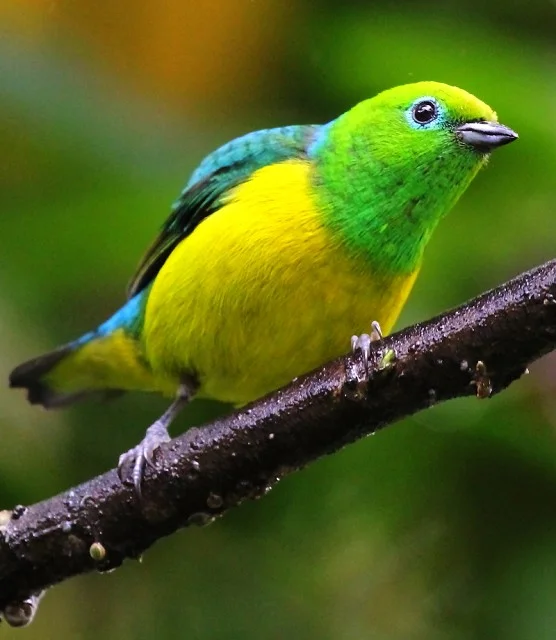El tangará bonito (Chlorophonia cyanea) es un ave de colores perteneciente a la familia Fringillidae, antiguamente considerado como miembro de los Thraupidae. Habita en Sudamérica, donde es un ave relativamente común.
DESCRIPCIÓN

Es un ave pequeña y redondeada, de color mayormente verde (cabeza y parte de las alas). El vientre es de color amarillo, y su espalda, cuello y líneas alrededor de los ojos tienen un tono azul celeste. Algunas subespecies tienen parte de la cabeza de color amarillo. Las hembras presentan una coloración más opaca que la de los machos; su vientre es más verdoso y las zonas azules son más pálidas. El pico, las patas y los ojos son de color negro.

DISTRIBUCIÓN Y HÁBITAT

Su distribución es mayormente disjunta. Pueden encontrarse ejemplares de tangará bonito en las zonas selváticas del sudeste de Brasil, el este de Paraguay y el noreste de Argentina, y también en los Andes desde el sur de Bolivia hasta el norte de Venezuela, en la Perijá y la Sierra Nevada de Santa Marta, la costa venezolana y el Tepuy. Todas las poblaciones prefieren el bosque húmedo, aunque también pueden vivir en jardines y parques cercanos (en especial en la zona de la Mata Atlántica). La mayor parte de las poblaciones viven en las tierras altas subtropicales, aunque numerosos individuos habitan cerca del nivel del mar en la Mata Atlántica.

Blue-naped chlorophonia
The blue-naped chlorophonia (Chlorophonia cyanea) is a colourful South American species of bird in the familyFringillidae; it was formerly placed in the Thraupidae. It is generally fairly common.

DESCRIPTION
A small, plump, mainly green bird. The underparts are yellow, and the mantle/lower nape, rump and eye-ring are blue. Some subspecies have a yellow frontlet. Females are duller than the males, with underparts more greenish-yellow and less blue to the mantle/lower nape.

DISTRIBUTION AND HABITAT

Its distribution is highly disjunct, with population associated with the Atlantic Forest in south-eastern Brazil, easternParaguay and north-eastern Argentina, the Andes from Bolivia in south to Venezuela in north, the Perijá and Santa Marta Mountains, the Venezuelan Coastal Range, and the Tepuis. All populations are associated with humid forest, but locally it also occurs in nearby gardens and parks (especially in the Atlantic Forest region). Most populations are found in subtropical highlands, but it occurs down to near sea level in the Atlantic Forest region.
